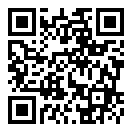
Why SCA’s CVA Falls Short: A Roaster’s Guide to Better Sensory Science
SCA’s new Coffee Value Assessment (CVA) may look comprehensive, but for coffee roasters it often introduces unnecessary complexity, untested assumptions, and misleading metrics that don’t translate into better roast decisions. In this session, we will:
- Expose CVA’s Core Weaknesses: Highlight how CVA confuses observational studies with prospective randomized experiments, uses a battery of predefined parameters with arbitrary variable types, and relies on far‑fetched consumer data collection methods that mislead rather than inform.
- Contrast with University Standards: Explore the three fundamental test types—discriminative, descriptive, and preference—that have guided sensory science for over five decades, and show why they deliver clarity and actionable data where CVA stumbles.
- Demonstrate Real-World Impact: See examples of how anecdote‑laden cupping forms lead to inconsistent roasts, and how university protocols drive reproducible results in product development and quality control even without complicated spreadsheets but rather basic observations .
Finally, learn how CoffeeMind’s software empowers roasters to apply these unaltered scientific distinctions directly in their operations and courses like “Sensory Performance for Coffee Roasters,” ensuring you make decisions grounded in true sensory science—not peripheral, unfounded assumptions.

